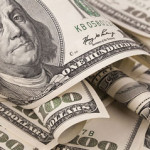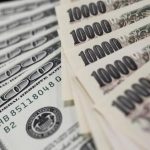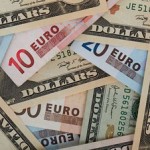The dollar rose on Friday; Riskier currencies lost out

The dollar rose on Friday, recovering its losses from the day before, as a spike in Treasury yields early in the European session triggered a risk-off move in global currency markets, with riskier currencies taking a hit.
Market participants have grown wary in recent weeks that there could be a spike in inflation caused by massive fiscal stimulus and pent-up consumer demand when economies reopen from their coronavirus lockdowns.
Although soft U.S. CPI data on Wednesday went some way to calm those fears, U.S. Treasuries sold off again on Friday, with the 10-year yield rising above 1.6%.
The dollar was up 0.4% on the day at 0840 GMT, at 91.835. But it was still below the high of 92.506 it reached on Tuesday, which was its strongest since November 2020.
“There is concern over inflation in the months ahead and that sense is dollar-supportive,” said Neil Jones, head of FX sales at Mizuho.
“It looks like pretty upbeat in the United States in terms of rollout of further vaccine plays, and of course that feeds into the economic recovery in the States, and a time when fiscal stimulus is extremely high, monetary stimulus is extremely high,” he said.
President Joe Biden told U.S. states on Thursday to make all adults eligible for a coronavirus vaccine by May 1, hours after he signed a $1.9 trillion stimulus bill into law.
The dollar index was still on track to end the week down by around 0.1% and Mizuho’s Jones said he thought the strengthening on Friday was likely to be temporary.
“My personal view is that the dollar is not on a trajectory for a higher fundamental trend,” he said.
Riskier currencies lost out, erasing recent gains. The Australian dollar – which is seen as a liquid proxy for risk appetite – fell by 0.5% to 0.77457 versus the U.S. dollar at 0841 GMT.
The New Zealand dollar was down around 0.6% against the U.S. dollar. The Norwegian crown lost out to both euro and dollar.
The European Central Bank said on Thursday that it would increase the pace of its money printing to prevent a rise in euro zone bond yields.
Although the euro was down around 0.5% at $1.19325 at 0841 GMT, it was still set to end the week up 0.2% overall.
Market attention now turns to the U.S. Federal Reserve’s meeting next week, where traders will be looking for any comments about rising yields.
ING strategists wrote in a note to clients that the market will probably wait until after the Fed’s meeting before pushing the dollar index into 90 and 91 territory.
Dollar-yen was up around 0.6%, changing hands at 109.140 at 0842 GMT. That’s close to the peak of 109.235 reached on Tuesday, which had been the yen’s weakest since June 2020.
The dollar was gaining some support versus Asian currencies because of rising U.S.-China tensions, said Derek Halpenny, head of research at MUFG.
The Biden administration amended licenses for companies to sell to China’s Huawei, further restricting companies from supplying items that can be used with 5G devices.
Elsewhere, bitcoin traded around $56,738 at 0838 GMT, having come close to, but not exceeded, its recent record high of $58,354.14.
Source: Reuters



























